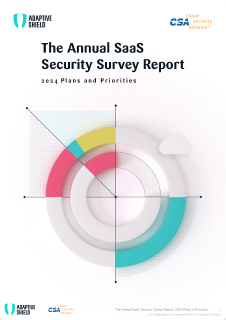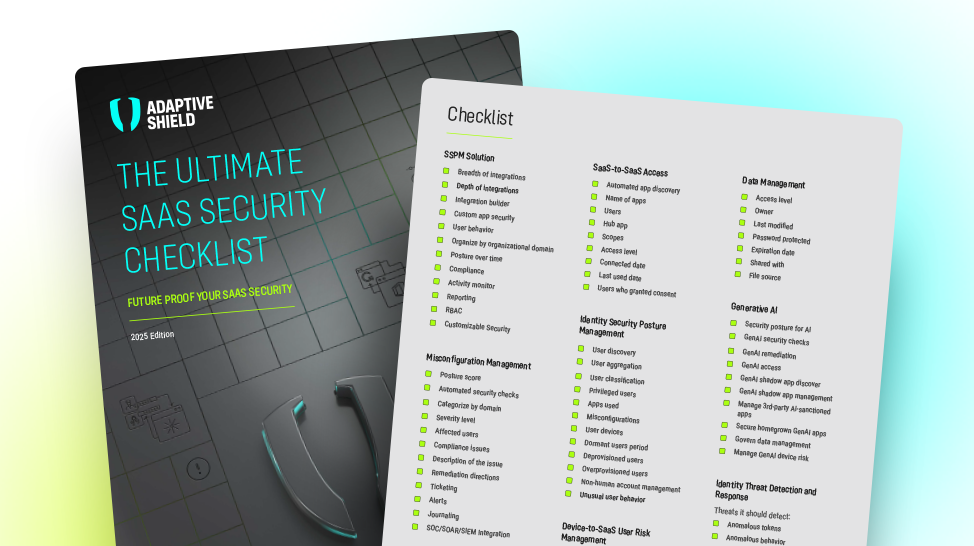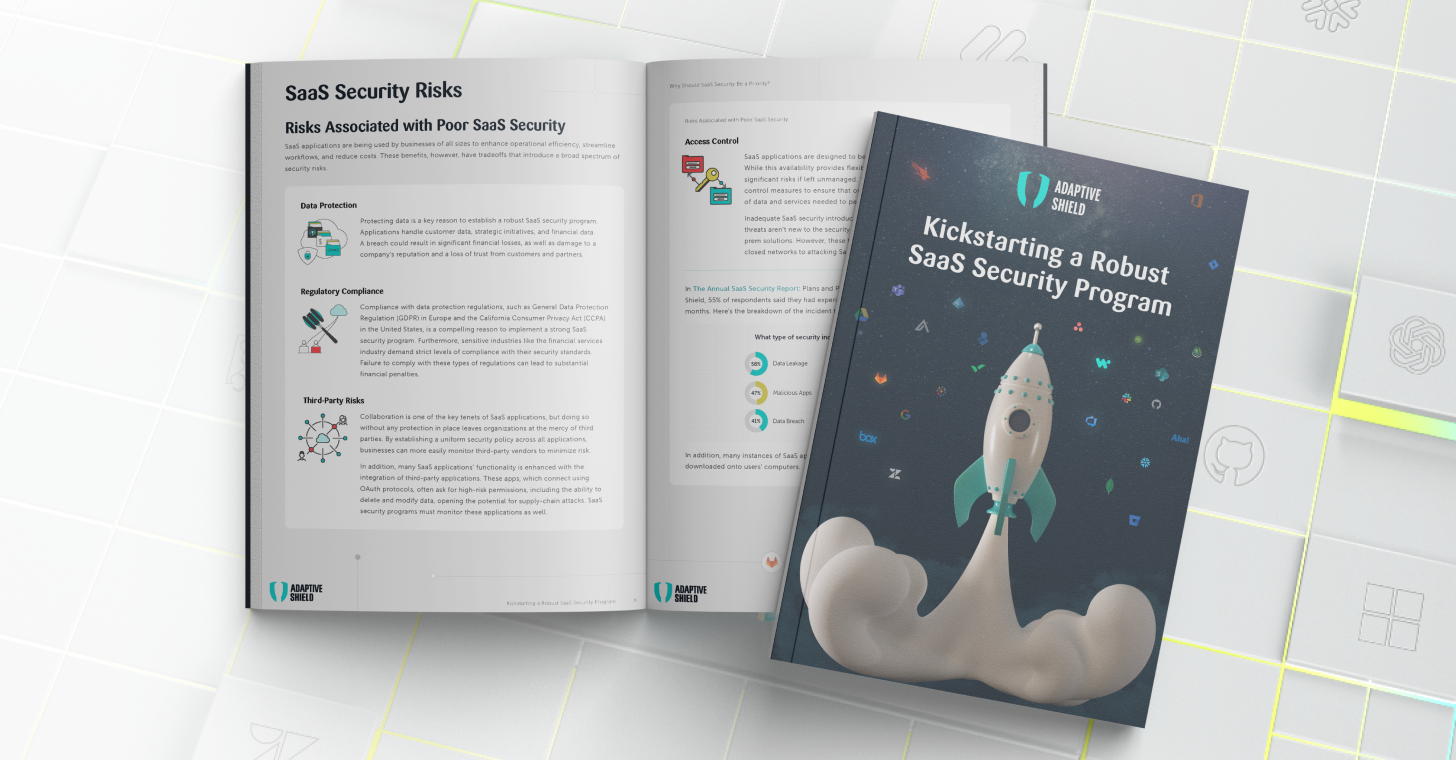What is the Difference Between CSPM and SSPM?
Cloud Security Posture Management (CSPM) and SaaS Security Posture Management (SSPM) are frequently confused. The similarity of the acronyms notwithstanding, both security solutions focus on securing data in the cloud. In a world where the terms “Cloud” and “SaaS” are used interchangeably, this confusion is understandable.
This confusion, though, is dangerous to organizations that need to secure data and corporate resources that exist within cloud infrastructures like AWS, Google Cloud, and Microsoft Azure, as well as resources within SaaS applications like Salesforce, Microsoft 365, and Google Workspace.
Assuming that either your CSPM or SSPM will secure your company resources that live off-premises is misplaced trust in a security tool that was only designed to secure either your cloud or your SaaS stack.
It’s absolutely vital for decision makers to understand the difference between CSPM and SSPM, the value derived from each solution and that both complement each other.
What Do CSPMs Protect?
CSPMs monitor standard and customized cloud applications that are deployed in a public cloud environment for security and compliance posture. Additionally, they usually provide compliance monitoring, DevOps, and dynamic cloud integration functionality.
Businesses use cloud platforms for many things. Whether it is being used as Infrastructure-as-a-Service (IaaS), which allows businesses to manage elements such as networks, servers, and data storage, or Platform-as-a-Service (PaaS), which facilitates the hosting, building, and deploying of customer-facing applications, cloud platforms contain critical business components.
For example, a company might use an IaaS to host its e-commerce website. By using a cloud provider, they have the flexibility to scale their web traffic capacity based on traffic flows. Peak times of day or seasons might increase their capacity, while fewer resources would be needed during off-peak or off-season times.
Within that site, a company might have a separate app that enables customers to prove their identity (know your customer process – KYC). That customer is stored in a container, where the app can access the information as needed, and then authorize the user within the website. This is a common practice of separating different elements of a service (e-commerce, in this case) into different apps, containers, servers, and networks. Such separation, which is enabled by using an IaaS, provides flexibility, better performance, customization, and potentially better security. But all this comes at a cost of great complexity and expanding the attack surface
CSPMs are tasked with monitoring the security posture of the cloud services hosted in IaaS and PaaS. In practical terms, this means scanning cloud settings and identifying any misconfigurations that could introduce elements of risk to the service. In circumstances where using a complex architecture, using containers in a Kubernetes system, the configurations are particularly complex, and securing them without a CSPM can lead to configuration drifts that expose data to the public.

SaaS vs PaaS vs IaaS - Understanding the Types of Cloud Services
What Do SSPMs Protect?
SSPMs monitor a company’s Software-as-a-Service (SaaS) stack. It integrates with a company’s applications, like Salesforce, Jira, and Microsoft 365, to provide visibility and control to the security teams and app managers. Such SaaS apps are not hosted in the company’s network or cloud infrastructure, rather they are hosted by the software provider.
Security teams have a unique challenge in securing SaaS applications. Many SaaS app purchases take place outside the view of the security team. They are onboarded without being reviewed from a security perspective, and put into production by the various business units.
To further complicate matters, each SaaS application uses a different topology for its settings. Security teams can’t issue a one-size-fits-all directive on SaaS app configurations.
SaaS applications store a tremendous volume of company data and resources. Customer data, financial reports, marketing plans, employee profiles, and more are all stored within different SaaS apps. This makes sharing and collaboration simple but also acts as a beacon to threat actors who wish to monetize or sabotage company resources.
SSPMs deliver visibility into the settings of each application, providing a security score and alerting security teams and app owners when there are high-risk misconfigurations.
SSPMs extend their coverage into apps that are easily onboarded by employees. SSPMs provide security teams with a list of connected applications, as well as the permission scopes that have been granted to the app.
Security teams are also concerned about users, especially privileged users, accessing SaaS applications using a compromised device. SSPMs provide a user inventory and device inventory. These inventories display users, the apps they are associated with, their permission scopes, and the hygiene of the devices they are using to access SaaS applications.
Deploying CSPMs and SSPMs Together
CSPMs and SSPMs are integral pieces of a robust cloud security platform. Any company using multiple SaaS applications with multiple users needs an SSPM solution to protect its data. At the same time, any company using cloud services like Azure, GCP, or AWS would be putting its operations at risk without a CSPM solution.
CSPMs allow organizations to identify their misconfigured networks, assess data risk, and continually monitor cloud events in their cloud environment. SSPMs help organizations identify and remediate misconfigurations, manage third-party applications, detect configuration drifts, manage users, and comply with universal or industry standards.
The two security tools each cover valuable use cases. CSPMs identify vulnerable cloud configuration settings, provide compliance for security frameworks, monitor cloud services, and manage changes that are made to their logs.
SSPMs have similar use cases, but in the SaaS environment. They offer continuous 24/7 visibility into misconfiguration management, and enable security teams to monitor SaaS-to-SaaS access. It offers compliance reports from the entire stack, rather than individual applications, and can help IT teams optimize their SaaS license spending. It manages risk from users and devices, as it ensures that only authorized personnel have access to the SaaS data.
SSPMs can be used to further safeguard IaaS and PaaS environments. While the CSPM ensures security at the infrastructure level, SSPMs can enhance security through their Identity & Access Governance tools, and by ensuring settings, such as SSO or requiring admins to use MFA.
SSPMs are also used to secure CSPMs. As the CSPM is a SaaS solution, SSPMs can ensure configurations are set correctly, review connected third-party applications, and provide user governance.
Working together, SSPMs and CSPMs ensure the security of your off-premise data by providing visibility and remediation actions that close vulnerabilities and reduce risk.
Are SSPMs and CSPMs a Worthwhile Investment?
Cloud services and SaaS applications are designed with security settings put in place, and neither SSPMs nor CSPMs adds additional coverage. However, those built-in security features don’t prevent data leakage or ransomware attacks when they are misconfigured.
SaaS applications and IaaS/PaaS installations often have hundreds of security configurations. With SaaS apps, each user has access to many configurations, which significantly increases the attack surface.
Monitoring these configurations manually isn’t possible at scale. Security teams don’t always recognize the vulnerability certain settings introduce, and even if they do, manual checks only provide a snapshot view which can be out of date by the time the audit is complete. The bottom line is manual audits are time-consuming, ineffective, and a drain on employee resources.
SSPMs and CSPMs deliver ROI by automating cloud and SaaS security checks, delivering 24/7 visibility into issues, and guiding the security team with the right settings for each application or cloud instance.




















